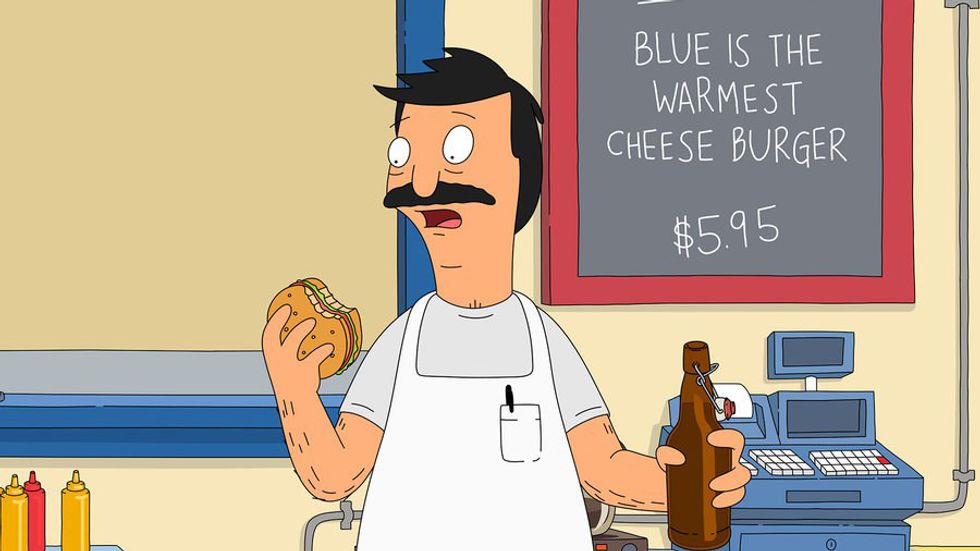This year’s presidential election has sparked fear and outrage in many, and understandably so. From the appointments of Steve Bannon and Jeff Sessions to the delayed disavowal of the “alt-right,” President-elect Trump has proven to be just as “presidential” as he was on the campaign trail. However, campaigns, sadly, rarely focus on policy issues. Now that he will be president, it is necessary that we know exactly what legislation he'll propose, in what ways it will affect our lives, and we need to do to stop it. Over the next few articles, I will be writing about many of Donald Trump’s policy proposals, beginning with his childcare plan.
His childcare plan is called Child Care Reforms That Will Make America Great Again.[1] Our job here is to determine whether it actually will make America great. This plan intends to aid children under thirteen and the elderly, and it proposes that money will be deducted from the income tax paid by working families making a combined income below $250,000 a year. The plan recognizes that some people do not make enough money to pay income taxes. Instead, these people will each receive tax credits for half of their payroll tax. Moreover, the Trump plan opens up a savings account where families can set aside money from annual contributions to go into their account tax-free. For lower income families, the government will match contributions of up to $1,000 at a 50 percent rate. The other parts of the plan describe macro-level changes, from rolling back regulations meant to help lower childcare costs in favor of free-market solutions and incentive structures to get employers to pay for childcare via tax credit. The final part of the plan is the introduction of a mandatory six weeks of paid maternity leave for new mothers in public and private employment. First, I will analyze the plan strictly through an economic lens. Then, I will shift the focus to discover any underlying discrimination found within the plan.
One of the most common questions for any policy is: “How will we pay for this?” Normally, one would have to cut back on another area of expense in the government. Other times, politicians will convincingly argue that the government would need to eliminate waste and fraud. Many liberals who argue for a system of single-payer health care say that if we can spend over two trillion dollars on the Iraq war, then “maybe, just maybe” we can cover the cost of health care for our citizens.[2] Donald Trump’s answer to this question, which can be found on his Fact Sheet concerning this plan, stated that the new tax code, specifically the parts I outlined above, will be paid for through the elimination of waste and fraud in our welfare system combined with added tax revenue resulting from robust economic activity.[3]
The first, and most obvious, problem is that the plan claims that government funding will cover part of the so-called care. Additionally, if much of this "care" will come in the form of tax deductions, then some of that money will also be deducted from government revenue. I will first focus on economic growth, which, admittedly, is based on good evidence. In Economic Growth Drives the Level of Tax Revenue, Andrew Lundeen, the Director of Federal Projects for the Tax Foundation, analyzed the tax revenue as a function of tax rates and economic growth, discovering that economic growth is the key driver for increased tax revenue. According to Lundeen, “From the mid-1980s through the late 1990s the economy grew steadily and tax revenues grew along with it. Conversely, between 2007 and 2009, total tax revenue in the U.S. dropped from 26.9 percent of GDP to 23.3 percent of GDP. The driver: the financial crisis and great recession.”[4] Clearly, then, the government should see a sufficient increase in tax revenue to pay for this program, right?
In the wise words of our new President-elect...
This begs the question as to whether the American economy will grow at a substantially faster rate in order to increase the amount of tax revenue the government will be taking in despite the cuts in the tax rates. This is a very poor basis to determine how a plan should be paid, considering this plan would theoretically go into effect soon, rather than after a President Trump supposedly speeds up the growth of our economy. Moreover, the U.S. is a fully developed country. One of Donald Trump’s major misunderstandings when it comes to the economy is that we have the potential to grow as quickly as China or India, saying, “China is growing at 7 percent, and that for them is a catastrophically low number. We are growing, our last report came out, it's right over the 1 percent level.”[5] This comparison is meaningless given that GDP growth tells us nothing about the standard of living for citizens, which is significantly higher in the U.S. than other developing countries, and is impossible for the U.S., given our massive GDP. The fastest growth we have seen in recent decades is 4 percent, and that was simply a sign of a growing bubble that eventually led to the 2008 crash. In other words, Trump’s idea of economic growth does not match reality.[6]
The second aspect to this answer I will focus on is the reduction of welfare fraud, which will tie into how this plan will actually hurt poorer families and greatly help those who have higher incomes. Of course, this argument is based on the existence of major welfare fraud and inefficiencies. The problem is that it is simply a myth that welfare fraud is a big problem. According to a report entitled Welfare and Benefit Fraud Statistics Show a Disturbing Pattern, by Steve Rhode, also known as the Get Out Of Debt Guy, the disturbing pattern is that many people believe that there is significant welfare fraud, when there simply aren’t any facts to back that up.[7] The same article cites Center of Budget and Policy Priorities, among many other government agencies, to conclude that fraud and waste accounted for very small parts of the welfare program, ranging from 0.018 percent to 2 percent. A level of waste and fraud on this level is wholly insignificant and would not cover the costs Trump’s plan discusses. Additionally, welfare and the other safety net programs (not including entitlements like Medicare, Medicaid, and Social Security), only account for 10 percent of the budget, revealing the insignificance of the part of the budget Trump seems to want to focus on.[8] Welfare programs are there to help the least, and here is where it starts to become abundantly clear that the Trump tax plan does not do anything for lower income groups and disproportionately benefits the upper classes.
According to Brittany Jones-Cooper from Yahoo Finance, “after reading [Trump’s plan] over, one thing is clear — most of the perks benefit families with higher incomes.”[9] For a majority of Americans who need the childcare relief the most, the plan does little to help them since they are ineligible to pay income taxes, and if they do, they pay very little. For those who do not pay income tax, the plan boasts an extra $1,200 per year for those Americans for childcare. That’s a number not nearly worth boasting about, especially if the tax credit can’t even be used to pay current bills. This is not to mention that the savings account Trump wants to create does absolutely nothing for lower income families, considering many Americans cannot afford to cover a few hundred dollars for an emergency expense, never mind over a thousand for childcare.[10] In other words, those who are poor cannot access the benefits of Trump’s plan, only those with more money will, up until the $250,000 bracket. This ties back into the larger issue with Trump’s reformed tax code that will massively cut taxes on the rich, granting almost all benefits to them, but none to the middle and lower classes.[11]
Of course, this is simply one of many problems with Donald Trump’s tax code. I will save a more in-depth analysis on how Trump’s new tax code works, and why many aspects of it hurt the economy and many Americans, but for now I will simply focus on one part of it that discredits the idea that the new tax code will pay for this program. According to Alan Cole from the Tax Foundation, Trump’s plan will decrease federal revenue by an unprecedented amount – between 2.6 trillion and 5.9 trillion dollars.[12] The lower end projections even account for the potential economic growth from the Trump plan.
The methods Trump’s plan uses to help Americans backfires in a majority of ways. However, there are two important social issues to evaluate in addition to the strict economic analysis. The first is the negative effect on the LGBTQ community and the sexism spread throughout the plan. The language of the plan makes it very clear that Trump’s team favors an America with a stay at home mom, saying that America will value them and help them. Trump’s plan offers leave only for mothers and offers more incentives for mothers to simply stay at home with their child. Aside from this sexism, the Trump plan is also anti-LGBTQ. The plan is specific to mothers in so many respects that it completely excludes gay fathers from almost all benefits.[13] Additionally, in the fact sheet, the answer to the question about same-sex couples was brushed off with a (paraphrased) “it’ll matter if the IRS recognizes them as a couple.” While the IRS has improved in recognizing more same-sex couples, the language of the plan outright excludes LGBTQ families.[14]
Trump’s childcare plan is the poisoned apple given to Snow White – it looks good on the outside, but will kill you once you get under the skin. The plan proposes a new account, deductions from taxes, and incentives for mothers to fulfill their "duties at home." It ignores many lower income people in need of the most help, fails to give a coherent explanation on how it will actually be implemented, and spews sexism and anti-queer language at every turn. Even if the intent is good, this is not the step in the right direction we were hoping from a populist candidate.
[1] Trump, Donald; “Child Care Reforms That Will Make America Great Again;” From His Campaign Website; Accessed on November 19th, 2016;https://assets.donaldjtrump.com/Childcare_Reform.p...
[2] Trotta, Daniel; “Iraq War Costs U.S. More Than $2 Trillion: Study;” (March 14th, 2013); Reuters, World News; Accessed On November 24th, 2016;http://www.reuters.com/article/us-iraq-war-anniver...
[3] Trump, Donald; “Donald J. Trump’s New Child Care Plan;” Accessed on November 19th, 2016;https://assets.donaldjtrump.com/CHILD_CARE_FACT_SH...
[4] Lundeen, Andrew; “Economic Growth Drives the Level of Tax Revenue;” (October 15th, 2014); Tax Foundation, The Tax Policy Blog; Accessed on November 24th, 2016;http://taxfoundation.org/blog/economic-growth-driv...
[5] Aizenman, Nurith; “Presidential Debate Follow-up: Could U.S. Economy Grow as Fast as India’s or China’s?” (October 24th, 2016); NPR, Goats and Sodas; Accessed on November 24th, 2016;http://www.npr.org/sections/goatsandsoda/2016/10/2...
[6] All evidence cited from the same NPR article cited in 5
[7] Rhode, Steve; “Welfare and Benefit Fraud Statistics Show a Disturbing Pattern;” (November 8th, 2012); Get Out of Debt Guy, Fraud, Using it For Statistics He Cites From Government Agencies and Analysis of Government Programs; Accessed on November 24th, 2016;https://getoutofdebt.org/47479/welfare-and-benefit...
[8] Center of Budget and Policy Priorities; “Policy Basics: Where Do Our Federal Tax Dollars Go;” (March 4th, 2016); Accessed on November 24th, 2016;http://www.cbpp.org/research/federal-budget/policy...
[9] Jones-Cooper, Brittany; “President Trump’s Child Care Plan Does Little for Low-Income Families;” (November 10th, 2016); Yahoo Finance, Accessed on November 19th, 2016;http://finance.yahoo.com/news/president-trumps-chi...
[10] Mui, Ylan Q; “The Shocking Number of Americans Who Can’t Cover a $400 Expense;” (May 25th, 2016); The Washington Post; Sections, Wonkblog, Accessed on November 19th, 2016;https://www.washingtonpost.com/news/wonk/wp/2016/0...
[11] Ydstie, John; “What is Donald Trump’s Tax Plan? An Analysis of Whom It Will Benefit;” (November 13th, 2016); NPR, Accessed on November 19th, 2016;http://www.npr.org/2016/11/13/501739277/who-benefi...
[12] Cole, Alan; “Details and Analysis of the Donald Trump Tax Reform Plan;” (September, 2016); Tax Foundation, Policy Analysis;http://taxfoundation.org/article/details-and-analy...
[13] “In Trump’s America, Only Women Take Care of Babies;” http://www.rollingstone.com/politics/features/in-t...
[14] “Treasury and IRS Announce That All Legal Same-Sex Marriages Will Be Recognized For Federal Tax Purposes; Ruling Provides Certainty, Benefits and Protections Under Federal Tax Law for Same-Sex Married Couples;” IRS; https://www.irs.gov/uac/newsroom/treasury-and-irs-...



































